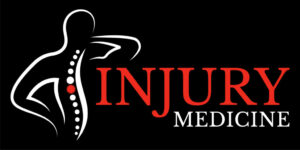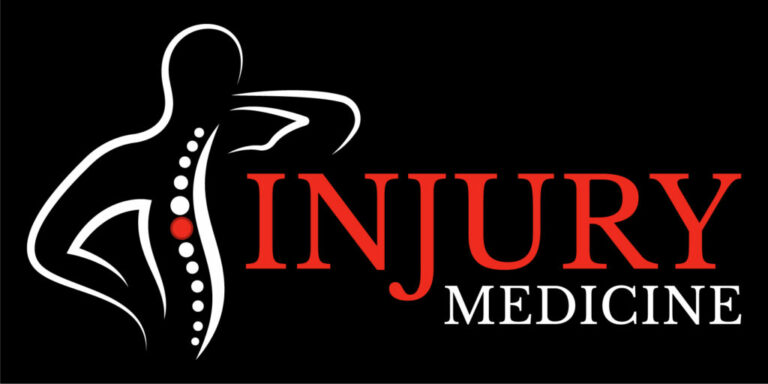A bulging disc injury is one of the most frustrating medical disorders because of its debilitating symptoms. It might be tough to determine what is causing the back pain, how to manage it, and whether or not a stronger treatment choice is required.
If you have questions about bulging disc injury treatment in Spartanburg, SC, you should contact Injury Medicine. We are a reputable clinic that knows more about pain treatment than anybody else in Spartanburg.
We understand that you are in a challenging situation that you will want to address head-on. If you’re looking for a way to get rid of your bulging disc pain, call our Spartanburg clinic at 864-866-PAIN today. We will take the time to diagnose your injury and develop a treatment plan that is unique to you.
What Is a Bulging Disc?
When the spongy discs between the vertebrae are squeezed and bulge out, this condition is referred to as a bulging disc. The spine is made up of several interlocking bones called vertebrae. The vertebrae support the spine while allowing the back to bend and move.
A spinal disc is a soft tissue that sits between each vertebra. The discs facilitate movement between the vertebrae and keep the bones from grinding together. They also serve as shock absorbers, preventing damage when moving.
Each disc has a strong outer layer and a gel layer in the center. With time, this gel may lose its suppleness and become hard. With aging, the amount of gel can diminish, get squeezed, and pushed out. When a disc bulges, it might compress or touch a nerve, resulting in pain.
The majority of bulging discs occur at the lumbar spine base. A gel-like center is pushed out via a tear in the disc’s exterior wall as the outer layer of the disc breaks down and ruptures. When the disc ruptures, it’s known as a herniated disc.
What Are the Symptoms of a Bulging Disc?
The location and the severity of a bulging disc in the spine determine the symptoms.
Some individuals may not experience any symptoms at all. However, when disc herniation and degeneration progress take place, a person may suffer the following symptoms:
- A backache that gets worse with movement, such as sneezing
- Spasms in the back muscles
- Numbness and weakness in the legs and feet
- Reduced mobility in the knees, legs, and ankles
- Decreased bowel and bladder control
- Difficulty walking
- Sciatica
- Reduced coordination
What Type of Injury Can Cause a Bulging Disc?
Bulging discs are commonly caused by traumatic injury. Vehicles collisions, contact from physical sports or exercise, and heavy lifting strain are all common causes of spinal trauma. Repetitive motion and disc deterioration from aging and degenerative disc disease can also result in a bulging or ruptured disc.
What Are Some Treatments for a Bulging Disc?
It’s easy to become lost in the details of some of the therapy options accessible to you and not know which one would work best for you.
This is why you must seek professional medical help. At Injury Medicine, we will not only assess your illness but also devise a treatment strategy tailored to your unique needs. The treatment options include:
Chiropractic Manipulation and Adjustments
A chiropractic adjustment is a treatment option where trained experts (chiropractors) apply a regulated but abrupt pressure to a spinal joint with a manual device or their hands. The purpose of spinal manipulation, often known as spinal manipulation, is to improve spinal motion and physical function.
A chiropractic adjustment usually consists of a high-velocity, low-amplitude thrust to a misaligned vertebra, along with an audible release of gas (joint cavitation) generated by the release of oxygen, nitrogen, and carbon dioxide, which relieves joint pressure.
Physical Therapy
Physical therapy (PT) is a treatment option that seeks to reduce discomfort and improve your ability to function, move, and live. It may be required to:
- Relieve discomfort.
- Improve your mobility or ability.
- Prevent or treat a sporting injury.
Physical therapists assist clients with pain management and mobility issues. Some pain and mobility issues can become persistent, requiring surgery. Many chronic diseases and ailments benefit from physical therapy treatment. It can also prevent many problems from worsening.
Rehabilitation Exercises
Rehabilitative exercise is a type of treatment performed after you have been injured and your capacity to conduct daily duties has been compromised. Physical therapy is similar, but it focuses more on activities to help you strengthen and restore your body.
Pain relief, inflammation reduction, improved mood, anxiety reduction, and fatigue reduction are just a few benefits of rehabilitation exercise. It also helps with balance, fall prevention, and sleep quality. It relaxes muscles, aids focus, strengthens the immune system, and enhances bone health and sleep!
Nerve Blocks
A nerve block is a pain treatment that involves injecting anesthetics and/or anti-inflammatory medications into a specific nerve or group of nerves.
Injections of drugs that block the pain from specific nerves are known as nerve blocks. They can be utilized for pain treatment and total sensory deprivation if surgery is required.
Nerve blocks are only a temporary solution; they usually last one or two weeks before being absorbed by your body. Some individuals require multiple nerve blocks before experiencing long-term relief.
Injections
Back injections are used to treat nerve injury or inflammation in the back. In general, injections for back pain are a successful and safe therapeutic option that provides a long-term cure to your pain, unlike oral medication. It’s also worth noting that pain management injections are less invasive than surgery.
The epidural steroid injection is a popular injection used to treat back discomfort. When using injections for pain relief, the drug will be delivered directly into the painful location. The injected medication will usually relieve your discomfort for a long time.
Radiofrequency Ablation
RFA, or radiofrequency ablation, is a minimally invasive procedure for shrinking tumors, nodules, and other growths in the body. RFA is used to treat chronic venous insufficiency, benign and malignant tumors, and chronic back and neck discomfort, among other conditions.
RFA can provide pain relief for six to twelve months, and in some circumstances, for years. More than 70% of individuals who receive RFA experience pain alleviation.
Spinal Cord Stimulator
A spinal cord stimulator (SCS) is a device that can be surgically implanted to administer a regulated electric current to a patient’s spinal cord.
Current is delivered to the nerve fibers of the spinal cord through thin cables from a pulse generator. The SCS stimulates the nerves in the area where your pain is felt when it is turned on.
If you need your spinal cord stimulator removed, the recovery time is usually minimal. Complete healing should take two to four weeks; however, as with other medical operations, the healing period varies from patient to patient.
Medications (prescription and over-the-counter)
To obtain these medications, a qualified physician will write you a prescription or will submit a prescription to the pharmacist on your behalf. Only the patient for whom the bulging disc medication was prescribed should take it. OTC pharmaceuticals are medications that can be purchased without a prescription.
Injury Medicine physicians will provide you with information on drug success rates and side effects and collaborate with the patient to guarantee a comprehensive and well monitored medication-related recovery plan, with any required revisions made and documented along the way.
Get Professional Bulging Disc Injury Treatment in Spartanburg, SC Today
You’ll deal with a broad range of symptoms if you have a bulging disc. This may include severe pain, numbness, tingling, and maybe a loss of motion because of the pain.
When you’re suffering from such debilitating symptoms, it’s critical to take action and seek bulging disc injury treatment in Spartanburg, SC, from a trained medical practitioner.
We can assist you with this and guarantee that your treatment plan is ideal. Call Injury Medicine at 864-866-PAIN to get started.


